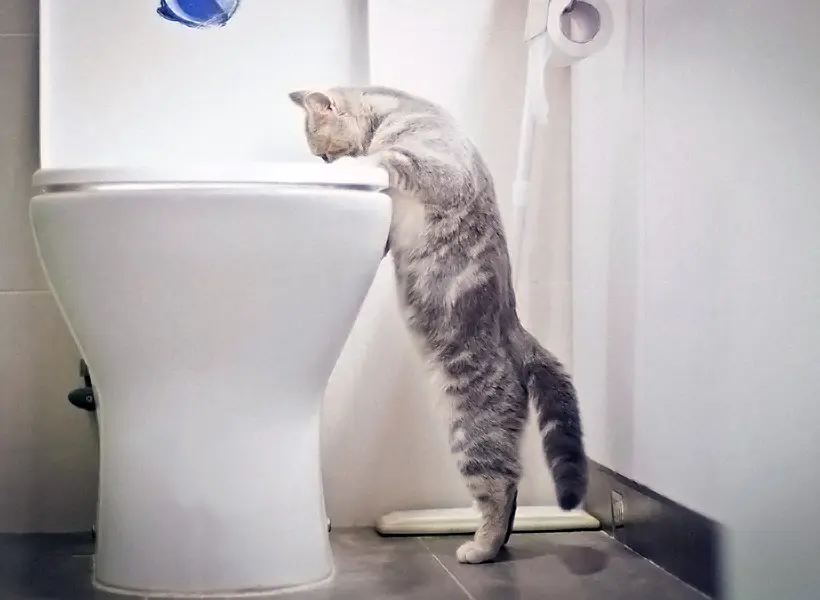Prevent Plumbing Problems: Never Flush Cat Poop Down Your Toilet - Professional Advice
Prevent Plumbing Problems: Never Flush Cat Poop Down Your Toilet - Professional Advice
Blog Article
Listed here in the next paragraph you will find some exceptional insight around How to Dispose of Cat Poop and Litter Without Plastic Bags.

Introduction
As cat owners, it's necessary to bear in mind exactly how we take care of our feline pals' waste. While it may seem convenient to flush cat poop down the commode, this method can have detrimental effects for both the setting and human health and wellness.
Environmental Impact
Flushing cat poop presents harmful microorganisms and bloodsuckers right into the water system, presenting a substantial threat to aquatic environments. These contaminants can negatively influence marine life and concession water high quality.
Wellness Risks
In addition to environmental issues, purging cat waste can also position health dangers to humans. Pet cat feces might include Toxoplasma gondii, a parasite that can create toxoplasmosis-- a potentially severe health problem, particularly for expectant women and individuals with weakened immune systems.
Alternatives to Flushing
Fortunately, there are much safer and more accountable ways to take care of feline poop. Think about the following alternatives:
1. Scoop and Dispose in Trash
The most common method of disposing of feline poop is to scoop it into a naturally degradable bag and toss it in the garbage. Make certain to make use of a specialized clutter scoop and throw away the waste quickly.
2. Use Biodegradable Litter
Opt for naturally degradable feline trash made from products such as corn or wheat. These clutters are eco-friendly and can be securely dealt with in the trash.
3. Bury in the Yard
If you have a yard, consider burying pet cat waste in a marked location away from veggie gardens and water resources. Make certain to dig deep adequate to avoid contamination of groundwater.
4. Set Up a Pet Waste Disposal System
Invest in an animal waste disposal system especially made for cat waste. These systems utilize enzymes to break down the waste, minimizing smell and environmental effect.
Final thought
Liable animal possession expands past offering food and sanctuary-- it likewise involves proper waste management. By refraining from flushing pet cat poop down the commode and selecting alternative disposal approaches, we can reduce our environmental impact and safeguard human wellness.
Why Can’t I Flush Cat Poop?
It Spreads a Parasite
Cats are frequently infected with a parasite called toxoplasma gondii. The parasite causes an infection called toxoplasmosis. It is usually harmless to cats. The parasite only uses cat poop as a host for its eggs. Otherwise, the cat’s immune system usually keeps the infection at low enough levels to maintain its own health. But it does not stop the develop of eggs. These eggs are tiny and surprisingly tough. They may survive for a year before they begin to grow. But that’s the problem.
Our wastewater system is not designed to deal with toxoplasmosis eggs. Instead, most eggs will flush from your toilet into sewers and wastewater management plants. After the sewage is treated for many other harmful things in it, it is typically released into local rivers, lakes, or oceans. Here, the toxoplasmosis eggs can find new hosts, including starfish, crabs, otters, and many other wildlife. For many, this is a significant risk to their health. Toxoplasmosis can also end up infecting water sources that are important for agriculture, which means our deer, pigs, and sheep can get infected too.
Is There Risk to Humans?
There can be a risk to human life from flushing cat poop down the toilet. If you do so, the parasites from your cat’s poop can end up in shellfish, game animals, or livestock. If this meat is then served raw or undercooked, the people who eat it can get sick.
In fact, according to the CDC, 40 million people in the United States are infected with toxoplasma gondii. They get it from exposure to infected seafood, or from some kind of cat poop contamination, like drinking from a stream that is contaminated or touching anything that has come into contact with cat poop. That includes just cleaning a cat litter box.
Most people who get infected with these parasites will not develop any symptoms. However, for pregnant women or for those with compromised immune systems, the parasite can cause severe health problems.
How to Handle Cat Poop
The best way to handle cat poop is actually to clean the box more often. The eggs that the parasite sheds will not become active until one to five days after the cat poops. That means that if you clean daily, you’re much less likely to come into direct contact with infectious eggs.
That said, always dispose of cat poop in the garbage and not down the toilet. Wash your hands before and after you clean the litter box, and bring the bag of poop right outside to your garbage bins.
https://trenchlesssolutionsusa.com/why-cant-i-flush-cat-poop/

Hopefully you enjoyed our excerpt on Can You Flush Cat Poop Down The Toilet?. Thank you for taking a few minutes to read through our posting. Enjoyed reading our entry? Please share it. Help other people discover it. Thanks so much for going through it.
Click Here Report this page